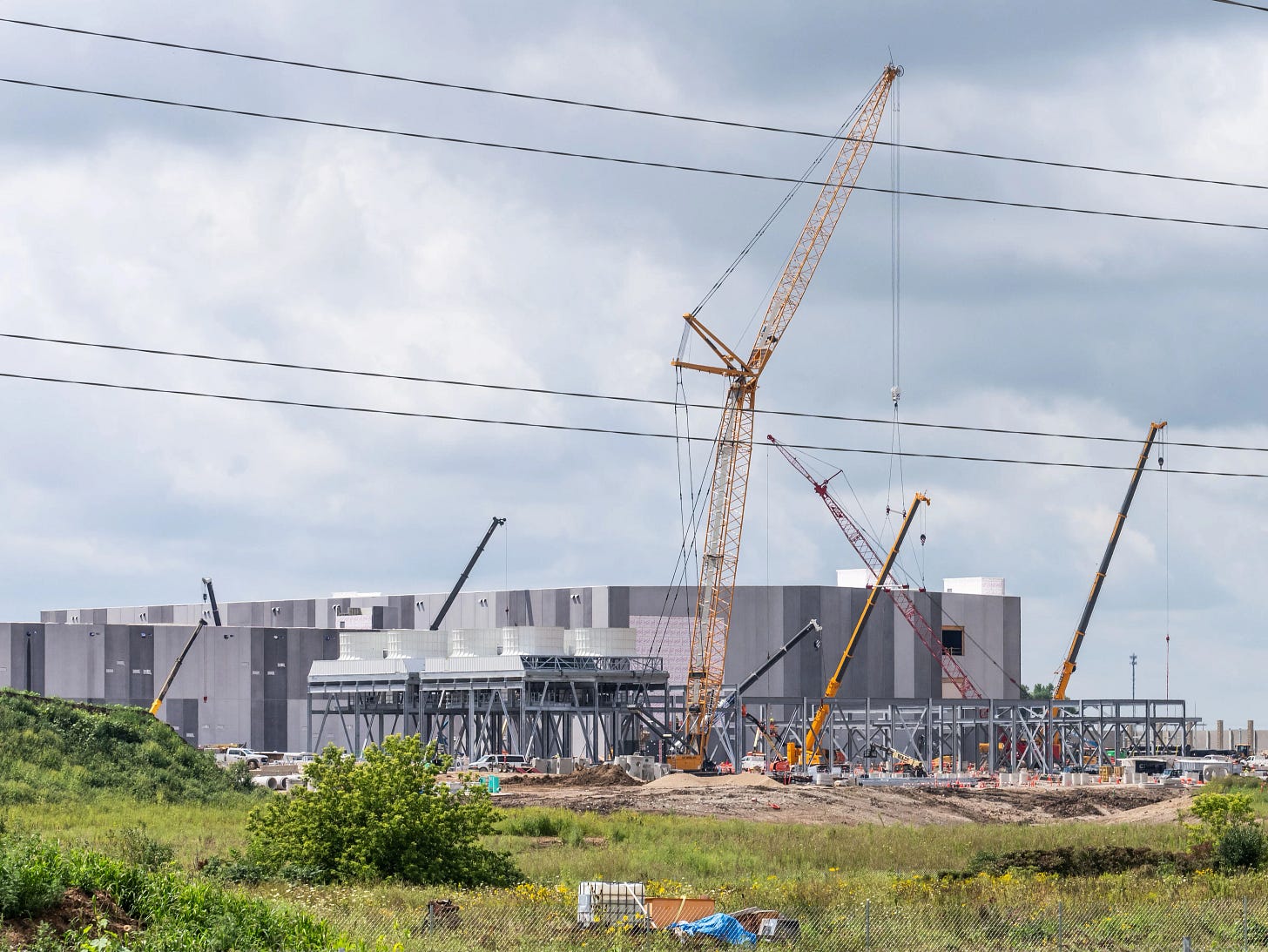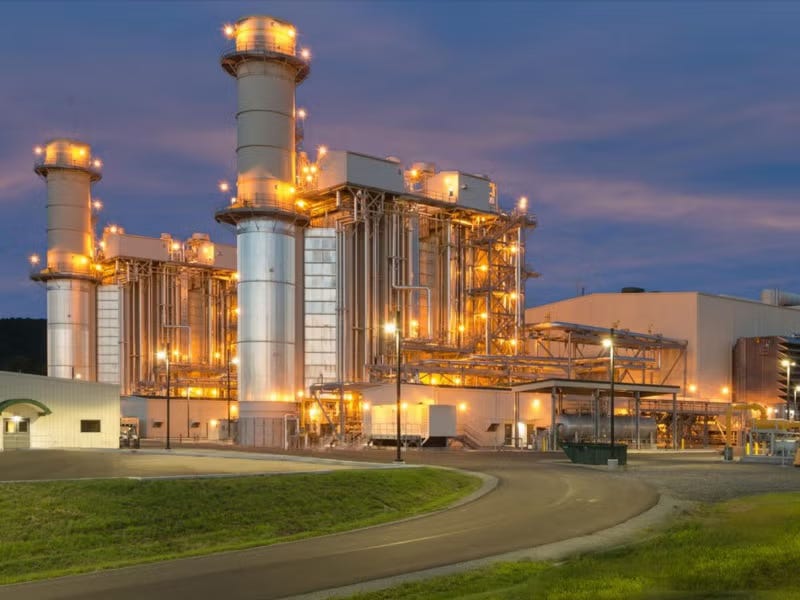The AI grid grab
Arthritic power grid governance has to get better, fast!
The serious people in the world of power systems planning are very far removed from the “fake it ‘till you make it” ethos of, say, social media influencers. Or maybe not always.
Consider the megatons of paper and megajoules of electrons that have gone into filings and studies for grid-connecting traditional data centers, AI-dedicated data centers and cryptocurrency miners. It is impossible to square those plans with already evident power capacity, equipment and labor shortages, not to mention ratepayer resistance. And the lines in the power demand graphs just keep going up for years.
So, are we all going to die sacrificing ourselves to the Moloch of AI? Ah, no, though that fear is a good way to raise money for pro-AI and anti-AI (and crypto) political action committees.
My belief is that it will be possible to get the power capacity and AI-juiced demand curves to cross without totally impoverishing the ratepayers. Mind you, regulators, utilities, other users and fiduciaries must ensure the silicon oligarchy is paying its fair share of power costs without the usual hidden risks and excessive leverage.
This better-informed oversight and public buy-in needs to happen quickly, though. AI, and machine learning more generally, is not just better cat videos and fake friends on Chat-GPT. The US needs to make its information science and data center expansion work, because we don’t have another industrial policy.
There’s a historical analogy with the 19th century railroad booms—and busts. The rail buildout was essential for the country’s development. It was also accompanied by massive overbuilding, overleverage, fraud, financial failures and corruption. We’ll have some of that with AI, but maybe we can take the “robber” out of “robber barons”.
Some of the policy changes necessary for rapid AI/data center development have already happened. Decarbonization of power generation has, effectively, been slowed or postponed by this Administration and Congress. Silicon Valley and the data center “hyperscalers” didn’t try to stop that, despite their years of clean power propagandizing.
Whatever your opinion of the long term viability of fossil fuel generation, it can be built at scale faster than the readily dispatchable alternatives such as new nuclear or hydro. Slower retirements of older coal and natural gas plants will cover part of the lead time and power shortfalls until new nuclear plants come online by the middle of the next decade. Climate activists will still try to force the retirements, but the Trump Administration has the legal authority and intent to keep the older plants open.
By coincidence, some of the grid reliability issues that accompanied high renewables penetration are similar to those created by AI-dedicated data centers. Intermittent renewables generation can have rapid fluctuations in output due to wind speeds or cloud cover, but AI data centers can impose even faster changes in load compared to “conventional” cloud data centers. Faster as in ten times more megawatts per second when their GPU processors have “training” workloads.
When a “hyperscale” AI data center has a gigawatts of peak demand, such fluctuations can add up. Some of this instability can be mitigated with load management techniques and hardware such as on-site batteries, but still…
And when your grid includes control areas with dozens of AI data centers, the management issues multiply unpredictably. For example, it has already been very difficult for the NERC, the independent US-Canada grid reliability authority, to get a handle on the “low voltage ride through” instability issues that can be created by Inverter Based Resources (i.e. wind, solar and batteries).
Large datacenters can manage low voltage events on the grid by switching to batteries or backup generation. OK. However, when there is a large cluster of data centers (hello Silicon Valley, Northern Virginia, etc.) and they all switch on or off backup power at the same time, the grid manager can have titanic over- and under-voltage surges that risk cascading blackouts. Bad publicity.
In the end, individual data center power management issues will have to be coordinated with management of the power grid as a whole. The Chinese are already applying this policy on their own grid. This could reduce some of the AI induced demand pressure.
That would be good for the data center builders because they’re now being blamed for consumer utility bill rate shocks. The anti-AI political reaction was crystallized in July after PJM Interconnection, the massive Mid-Atlantic grid operator that is home to over half of US data centers, conducted an auction that failed to procure sufficient additional generation capacity.
Despite triple digit increases in the price of “capacity”, or the ability of a generator to provide power when needed, the auction attracted offers for new generation that were less than half of this year’s projected increase in demand, almost all of which was due to data centers.
Sounds bad, but not un-fixable. The PJM auction process was being asked to do work it was not designed for. The PJM Market Monitor came out with what I consider a pretty good critique and solution set on August 27, when everyone else was already at the beach.
As the Monitor sees it, “the current tight conditions are almost entirely the result of large data center load additions, both actual historic and forecast.” Therefore, the solution is for data centers to “Bring Your Own New Generation”.
Now some, such as data center owners and developers, would say such a rule would be discriminatory. It would be, agrees the Monitor, but not “unduly discriminatory”, which is the legal standard, and, therefore, “just and reasonable” under the Federal Power Act.
The BYOG policy would probably bring down the return on capital of new data centers, which means some of the less viable proposals would go away. That would be better for everyone than the political firestorm of a ratepayer revolt.
Of course, it wouldn’t be in character for the silicon oligarchs to just nod with a grin and pick up the check. They’ve already put up at least $200 million for pro-AI PACs, and you can be sure that’s just the opening ante.
And PJM’s management have their own complex, multistep solution (as usual). Under this plan, to summarize, if not enough capacity is procured at the PJM level auctions, the data centers would graciously accept mandatory and voluntary load reductions in their local areas.
You know, the data oligarchs might just accept this, after an appropriate fight. But why? Because THEY ALREADY HAVE THE BACKUP GENERATION FOR THE HOURS, THEY WOULD ACTUALLY NEED THE CAPACITY. “Yeah,” says a DC energy lobbyist, “that’s the real plan. Of course they can’t actually say that”.
It would be poor manners for me to point out that many, if not most, of the backup generators are diesel powered, or that the bigger AI developers might be expecting some of the smaller developers and crypto miners to go broke, which might also solve part of the power deficit problem. So, I won’t.
Also, the PJM planners have built some padding into their figures for available power capacity. For example, they reduced their assumptions for “effective” capacity of gas and coal fired generation in response to problems with gas deliveries and frozen coal piles such as those experienced during Winter Storm Elliott in 2022. But most of those problems have been solved with better preparations for cold-weather gas production and onsite fuel storage.
The data center developers can also count on Wall Street to explain how all the money they need beyond their own cash flow can be financed painlessly with special purpose vehicles and other special banker magic. Of course. I mean, Wall Street has done that before, haven’t they? Perhaps they should be watched more closely this time.
It is perfectly reasonable for regulators, politicians and the public to condition their acceptance of the AI buildout on the assurance that the risks of stranded costs be covered by the developers. And that should mean “covered” with enforceable guarantees or collateral. Not a problem, right?









Thank you John! It is only here, in Europe, that our "net zero", West European electricity system is so arthritic. As a consequence of our insistence that emitting CO2 into the atmosphere is evil, we Europeans will be spectators of the AI boom (if that really will be a boom 😂 😂), and not in any way beneficiaries. BTW, to what extent is the unrest in France related to the EU's "net zero" energy policies?
How are unprecedented temperature swings factored into the load equation?
Summer air conditioning demand looks to get worse not better in coming decades ( thank you diesel powered generators).
Trump’s dysfunctional cuts to weather forecasting monitoring come at the absolute worst time. The grid operators and data center moguls better include that need in their Washington lobbying efforts.